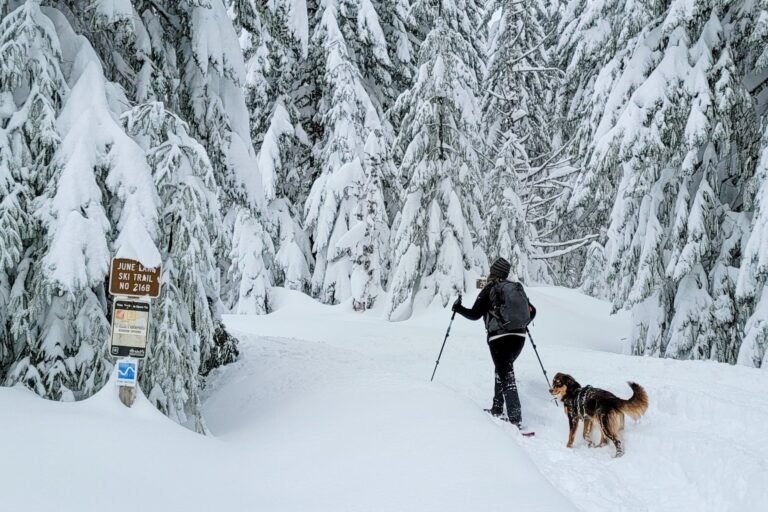Many dog owners desire to take their furry friends on outdoor adventures, but transitioning from a life of leisure to an active lifestyle requires planning and preparation. In this guide, you’ll learn effective training methods to get your dog ready for hiking, running, and exploring the great outdoors. You’ll discover how to build their endurance, improve their obedience, and ensure that both you and your dog are safely enjoying every step of the journey.
Laying the Groundwork for Adventure
Before hitting the trails, solid preparation sets the stage for successful outdoor experiences. Start with basic obedience training to ensure your dog responds well to commands, which is necessary for their safety in unpredictable environments. Gradually introduce them to varied terrains and environmental stimuli, focusing on building their confidence. Establishing a routine that includes outdoor exercise will strengthen their muscles and endurance, making the transition to adventurous outings seamless. With a solid foundation, both you and your dog can enjoy the great outdoors with ease.
Essential Gear for Trail Ready Dogs
Selecting the right gear can enhance your dog’s outdoor experience significantly. A comfortable, well-fitting harness provides support during hikes, while a sturdy leash allows for better control in unfamiliar areas. Consider a reflective vest for visibility during low-light conditions and a collapsible water bowl to keep them hydrated. High-quality dog boots protect their paws from rough terrains too. Invest in gear that suits your dog’s size and breed to ensure a safe and enjoyable adventure.
Assessing Your Dog’s Physical Fitness
Evaluating your dog’s physical fitness is key to planning safe and enjoyable outdoor activities. Analyze their weight, energy levels, and existing exercise routine. A simple test is a brisk 20-minute walk; if your dog remains energetic and eager to continue, they’re likely fit enough for more strenuous hikes. Dogs with weight issues or pre-existing conditions may need a vet’s approval before begining on adventures. Monitoring their stamina and adjusting activity levels accordingly will help prevent injury and ensure lasting fun on the trails.
Pay attention to signs of fatigue during walks or playtime. If your dog shows excessive panting, lagging, or reluctance to continue, they may need additional conditioning before tackling longer hikes. Start with short distances and gradually increase duration and intensity, allowing for appropriate rest periods. Regular assessments will help gauge their progress and readiness for outdoor challenges, making each adventure safer and more enjoyable for both of you.
Building a Strong Foundation: Basic Obedience
Establishing basic obedience is imperative for any dog preparing for outdoor adventures. This groundwork creates a framework for more complex commands and behaviors, ensuring your dog feels secure and understands expectations in unfamiliar environments. Begin with simple commands like ‘sit,’ ‘stay,’ and ‘come’ to foster reliable communication between you and your dog, paving the way for a safe and enjoyable outdoor experience.
Command Essentials Every Adventure Dog Should Know
For effective outdoor management, your dog should master imperative commands: ‘fetch,’ ‘leave it,’ and ‘heel.’ These commands enhance your dog’s safety and control during hikes, allowing you to navigate challenging terrains while keeping your pet engaged and focused. Each command not only strengthens your bond but also supports their ability to follow directions amid distractions, making adventures smoother.
Positive Reinforcement Techniques for Success
Implementing positive reinforcement significantly boosts your dog’s learning process. Rewarding desirable behaviors—such as treats, praise, or playtime—encourages your dog to repeat those actions. This approach helps build confidence and fosters a positive association with training sessions, creating an eager and enthusiastic learner ready for adventure.
Focus on consistency in your rewards. For example, using high-value treats during outdoor training sessions can capture your dog’s attention amid distractions. Additionally, timing your rewards immediately after your dog obeys commands ensures they connect the action with the positive outcome. Varying rewards keeps the training exciting; sometimes give a toy instead of treats to engage your dog differently. Over time, your dog will develop a reliable response to your commands, making outdoor adventures enjoyable and carefree.
Gradual Exposure to the Outdoors
Introducing your dog to the outdoors requires a methodical approach that prioritizes comfort and confidence. Begin with short, manageable outings to help your dog acclimate to new sights, sounds, and smells. Gradually increase exposure by extending walks and introducing varied terrains. This slow acclimatization allows your pet to build endurance and familiarity, reducing anxiety and ensuring a positive experience. Aim for consistency, taking your dog outdoors several times a week to reinforce good behavior and strengthen the bond through shared experiences.
Choosing Beginner-friendly Trails for Training
Selecting appropriate trails is vital for your dog’s initial outdoor training. Look for flat, well-marked paths that are free from heavy foot traffic and environmental hazards. Parks with designated dog areas are ideal, as they provide a safe space for exploration without overwhelming your dog. Opt for trails that allow shade during sunny days, and ensure access to water points. Familiarizing your dog with these beginner-friendly terrains nurtures confidence and allows for an enjoyable learning experience.
Socialization Strategies with Other Dogs and Nature
Socializing your dog not only enhances their adaptability but also enriches their outdoor experience. Arrange playdates with friendly dogs in a controlled environment before heading out on trails. When you’re on outdoor excursions, encourage positive interactions with other dogs while observing their body language. Introducing your dog to nature involves exposing them to various elements such as water, rocks, and different plant textures. Take time to explore together, allowing your dog to engage and respond to their environment positively.
Consider joining local dog clubs or participating in group hikes, which offer structured socialization opportunities. Start with small groups to avoid overstimulation, allowing your dog to interact at their own pace. Gradually increase the size of the group as your dog becomes more comfortable. Also, visiting pet-friendly parks can introduce your dog to the sounds and sights of other animals, reinforcing positive behavior. Make each outing a fun, supervised interaction that encourages your dog to forge friendships while becoming more at ease in varied outdoor settings.
Enhancing Stamina and Endurance
Boosting your dog’s stamina and endurance is imperative for tackling longer outdoor adventures. Focus on gradually increasing the intensity and duration of your outings, allowing your dog to adapt without feeling overwhelmed. Incorporating a mix of activities such as hiking, running, and playing fetch can build muscle and improve cardiovascular fitness, setting them up for success on extended excursions.
Structured Exercise Plans for Longer Hikes
Creating a structured exercise plan helps prepare your dog for longer hikes. Start with shorter, manageable walks, gradually increasing distance each week. Aim for at least three outings weekly, incorporating terrain variety to build strength. Tracking your dog’s progress through a log can offer insights and ensure they’re appropriately challenged, while also allowing for necessary rest periods to prevent overexertion.
Interval Training Techniques for Dogs
Incorporating interval training into your dog’s routine can enhance their endurance effectively. Alternate between intense bursts of activity and periods of rest, simulating the variations they’ll encounter on outdoor adventures. For instance, allow your dog to sprint for a minute and then slow down for two minutes to catch their breath, gradually increasing the intensity and duration as their fitness improves.
To implement interval training, choose a familiar route where distractions are minimal. Start with short, controlled bursts of speed, perhaps sprinting alongside your dog for 30 seconds, followed by two minutes of walking. Gradually increase to longer intervals, focusing on your dog’s form and comfort. This method not only improves cardiovascular health but also encourages mental engagement, making outdoor adventures more enjoyable for both of you. Consistency is key; aim for two to three sessions per week to sustain progress and boost endurance effectively.
Safety First: Navigating Outdoor Challenges
As you and your dog venture into the great outdoors, being aware of potential hazards is necessary. Navigate trails with caution, staying alert for shifts in terrain, wildlife, and other elements that could pose risks. Familiarize yourself with local regulations and trail-specific guidelines that may impact your adventure, ensuring both you and your furry companion enjoy a safe experience.
Recognizing and Preventing Common Trail Hazards
Identifying common trail hazards is key to ensuring safety. Look out for steep drops, slippery rocks, and thick vegetation that might conceal wildlife. Familiarize yourself with local fauna, particularly poisonous plants and snakes. Keeping your dog on a leash can prevent them from wandering into dangerous areas, allowing for a safer exploration of the environment.
Hydration and Nutrition: Keeping Your Companion Healthy
Proper hydration and nutrition play a significant role in your dog’s outdoor health. Always carry ample water for both you and your dog on hikes. Pack dog-friendly snacks rich in protein and easy to digest, ideally providing around 30 calories per pound of your dog’s weight daily, adjusted for their fitness level and activity duration. Regular breaks for water and nourishment will ensure your pet stays energized and vibrant throughout your adventures.
To ensure optimal hydration, aim to offer your dog water every 30 minutes when active, especially in warm weather. Electrolyte drinks designed for dogs can be beneficial for longer excursions, preventing dehydration. Feed your dog high-quality, nutrient-rich foods before and after hikes for sustained energy levels. Planning your route with rest stops will help you maintain your dog’s health and performance, ensuring both of you enjoy the journey without fatigue or health issues.
Summing up
With these considerations in mind, you can successfully train your dog to transition from a relaxed couch lifestyle to thrilling outdoor adventures. By gradually increasing their exercise, focusing on positive reinforcement, and ensuring they are well-prepared for different terrains, you create a rewarding experience for both of you. Consistency and patience are key in this training journey, helping your dog build confidence and enthusiasm for outdoor exploration. Embrace the process, and soon you’ll enjoy countless adventures together in nature.







